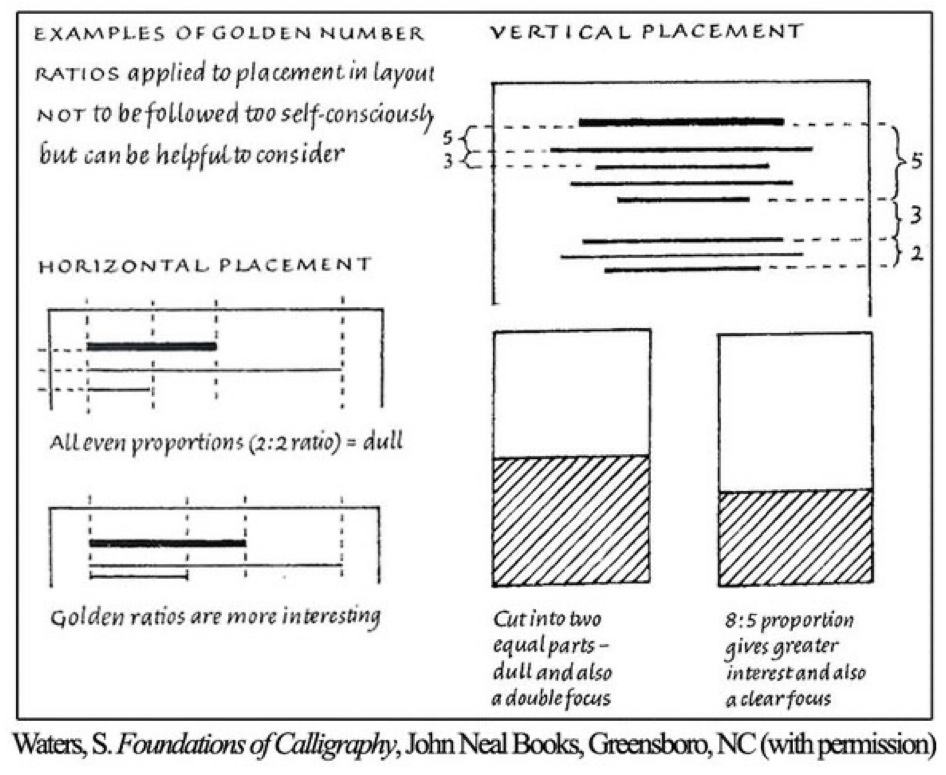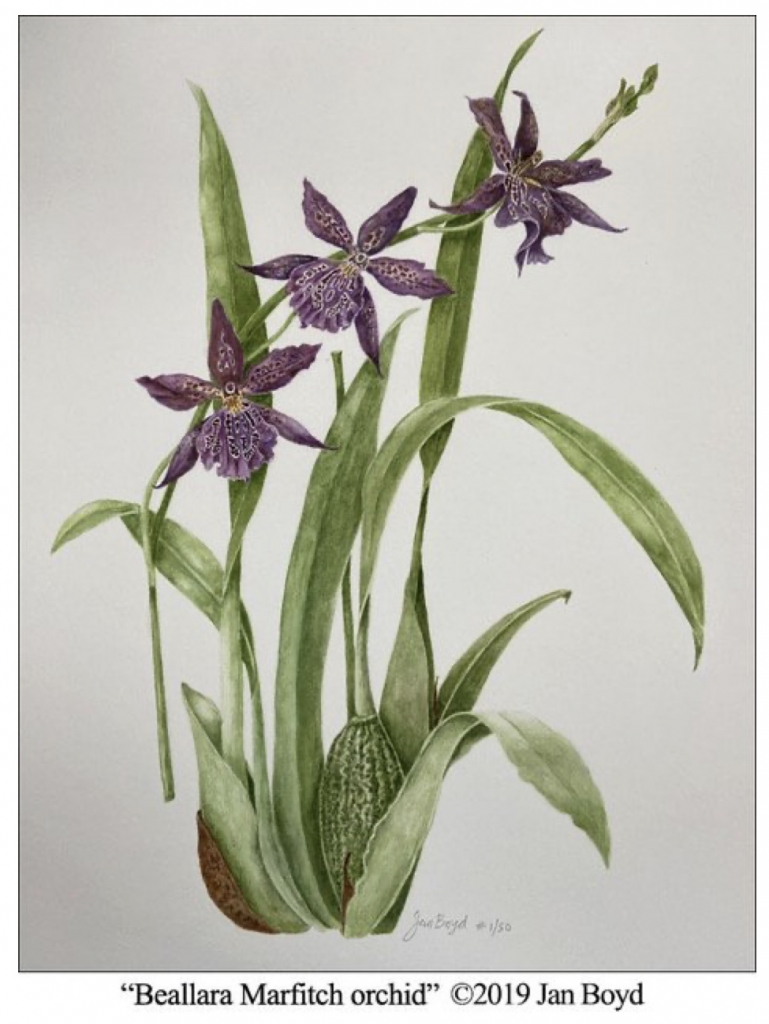by Jan Boyd
PART 2 OF 2
Over the years I have had the opportunity to study with one of the world’s most renowned calligraphers, Sheila Waters. She teaches the following for layout in lettering which we can apply to our work with flowers, plants, etc. as well:

All of this information can inform our understanding of the plants we paint – both the plants themselves and the understanding of beautiful proportions in the layout on our paintings. Using the Golden Mean and associated Fibonacci numbers, thereby avoiding even proportions both vertically and horizontally, will help to keep paintings from appearing static and dull.
Fibonacci numbers can inform the numbers of foci in a painting – quantities of 1, 3 or 5 are generally perceived as more pleasing to the eye. Awareness of balance issues can help to avoid images that might appear out of proportion.
So now it might be helpful to see these principals in practice by applying them to an Orchid painting I created a few years ago. I believe that it is in reasonable Golden Section proportions. In addition to the general layout, it is also interesting to note that there are 5 large leaves, 3 smaller leaves and 3 flowers at the top. Also note that each orchid has 5 tepals and one lip…. All Fibonacci numbers!

While the value of knowing these concepts may now be manifest, it is also wise that they not be followed slavishly in our field of fine art. “Perfect” faces, if we all had them, would look robotic and unnatural. Flowers and plants certainly have strong tendencies to conform to these concepts, but their variations are what make them interesting and always fascinating. The best use of Fibonacci numbers and the Golden Mean in botanical illustration, in my opinion, would be to be mindful of them when creating a piece of art and very alert to how they might help your analysis if you create or view a piece of art that seems “off” somehow.
www.janboyd.com
